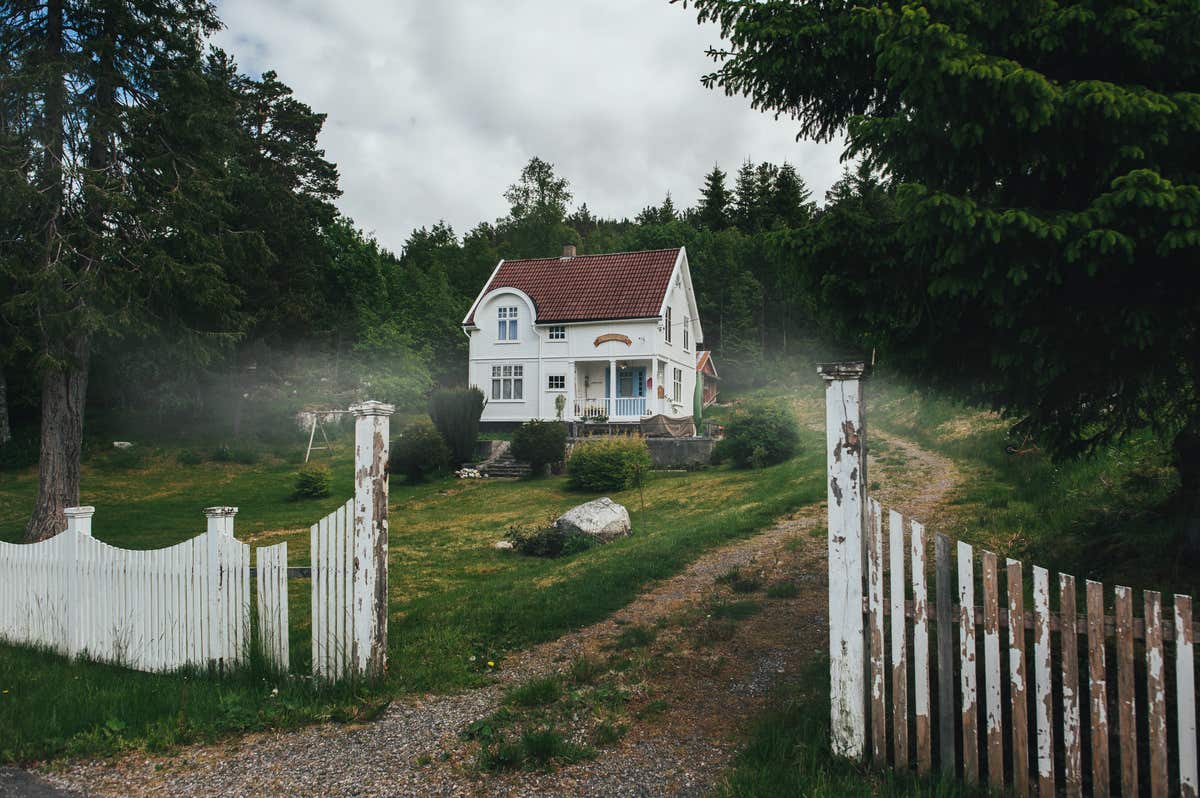Hosting a free haunted house? Your homeowners' insurance should cover your risks. Charging admission? You’ll need separate haunted house insurance.
Last year, we celebrated Halloween by bringing you four real-life tales of haunted homes. This year, we’re taking a more practical approach, explaining how insurance can help homeowners with a haunted house. We’re going to tackle the two meanings of “haunted house insurance,” looking at both what kinds of insurance coverage you should have in place if you’re planning to invite people over for a spooky adventure you’ve orchestrated and how your homeowners' insurance will be affected if you live in an honest-to-goodness haunted house.
How to insure a haunted house
If you’re going to invite people over for classic Halloween thrills and chills (think: peeled-grape “eyeballs” and cooked-spaghetti “brains” to squeeze in a dark room), the most important question for insurance purposes is whether or not you’ll charge for admission.
“If you choose to charge admission to your haunted house, you need to consider the commercial aspects of your insurance policy,” said Ross Martin, a licensed agent with insurance comparison site The Zebra.
“The liability portion of your coverage could also be negated if you charge admission,” he added. “This is the coverage that protects you if someone suffers an injury on your property. With this coverage negated, the homeowner is at risk and might have to pay for damages or injuries out of pocket.”
Robert DiCristofaro, an independent insurance broker with 1st Cannon, LLC, agreed: “[A haunted house] is no different than any other party in the insurance company’s eyes,” he said. “As long as you’re not charging for entry.”
Why does selling tickets impact your homeowners' insurance? Because most homeowners policies explicitly exclude any business-related activities. And if you’re making money on the operation, your haunted house is considered a business.
To make sure you have adequate insurance for your haunted house, you have two options:
- Don’t charge admission. This is the simplest solution and will prevent your haunted house from negating the liability and property coverage you enjoy from your homeowners' insurance policy.
- Purchase a business insurance policy. This is both more complicated and more expensive. But if your haunted house is a financial investment and it makes sense to charge admission, it’s important to have insurance. In addition to exploring business insurance, you might want to check your state’s and county’s laws on business zoning to make sure you’re allowed to operate a profit-generating haunted house from your home.
Even if you’re not planning to make money from your haunted house, you’ll want to make sure the liability portion of your standard homeowners' policy is up to the task of covering your guests.
A haunted house is no different than any other party in the insurance company’s eyes – unless you're charging admission.
Managing liability at a free haunted house
Even if you're not charging admission, both Martin and DiCristofaro say that it never hurts to make sure your homeowners' policy is ready for the haunted house.
“You might want to make sure you have adequate liability levels before the party,” said DiCristofaro. “If someone is injured, as we all know, medical bills can rack up quickly, and you don’t want to get stuck footing the bill.”
Martin suggested taking the time to make sure your property is as safe as possible, which might mean removing tripping hazards, lighting outdoor steps and walkways, repairing cracks in the sidewalk, and providing enough light to prevent stumbling in the haunted house itself.
“Also,” he added, “[It’s] probably best to avoid having one of those chainsaw-wielding madmen that are common in many of the larger commercial haunted houses.”
We very much agree. But what if your house is actually haunted? How will your insurance company deal with that?
Insuring a haunted property
DiCristafaro was categorical when we asked him about truly haunted houses: “Insurance companies don’t believe in ghosts for one reason: they insure physical property and physical things are rarely affected by intangible things. I have never seen a question about ghosts on an insurance application, or had a company increase rates because a house was haunted.”
In other words: insurance companies don’t think ghosts exist, so they won’t require any special insurance if you think there’s a ghost in your home.
Martin concurred on this point, noting that a ghost story or house’s history aren't likely to affect the cost or insurance eligibility of a home.
“On the other hand,” he said, “If a home is famous (or infamous) for some reason, this could possibly drive up costs as more people may attempt to visit the property, leading to potential accidents or theft.”
He went on to explain that the real issue with haunted houses (which are called “stigmatized properties” in the real estate industry) is with selling.
“In most states,” he explained, “A seller is required to disclose such issues (murder, cult activity, suicide, etc.). In many places, sellers must even disclose whether a house is haunted, though this is usually a sign of more explainable issues such as gas leaks or foundation problems.”
And if the house does have gas leaks or foundation problems, well, your insurance provider will definitely want to know about them.
The official stance of insurance companies: ghosts don't exist.
Other considerations for Halloween and mischief night
Even if you’ll have no association with a haunted house this Halloween (whether real or orchestrated), Halloween and Mischief Night (also known as Devil’s Night, Goosey Night, Cabbage Night, Gate Night, and Moving Night) can present some insurance challenges.
To ensure that you, your home, and any trick-or-treaters you welcome stay safe, make sure you do the following:
- Park in a sheltered area, if possible. Egging cars is common on Mischief Night, so if you have a garage, park your car inside. Eggs left on a car can damage its paint and is, in any case, annoying to clean off.
- Bring decorative pumpkins and outdoor furniture inside. Another common pastime: smashing pumpkins and moving outdoor furniture. If Mischief Night is “celebrated” in your area, consider bringing in your decorations while it’s dark out.
- Provide adequate outdoor lighting. When Halloween itself rolls around, you’ll want to make sure trick-or-treaters can see where they’re walking (especially if they’re wearing masks). That means making sure your outdoor lights are in good working order.
- Repair or highlight any tripping hazards. If you don’t have time to fix a cracked driveway, for example, a traffic cone can help prevent unexpected falls. If you can remove the hazard, though, doing so might prevent injuries.
- Mention any allergens in the candy you distribute. Most parents of kids with allergies know what to avoid. But if you’re giving out anything homemade or out of its package, be sure to mention the presence of the eight most common allergens: milk, eggs, tree nuts, peanuts, shellfish, wheat, soy, and fish. (Though if you’re giving out a treat with shellfish or fish… maybe rethink some things.)
Of course, ensuring you have a safe home shouldn’t only happen around Halloween. For a more comprehensive guide to ensuring that your property and your loved ones are safe, take a look at our home safety checklist.


